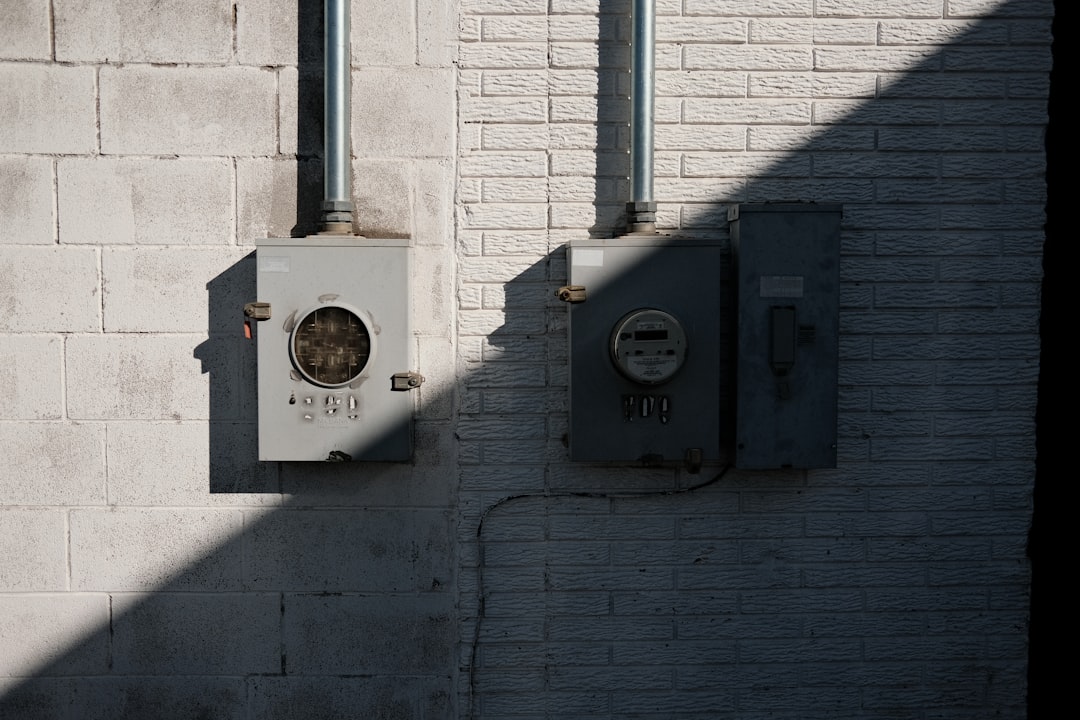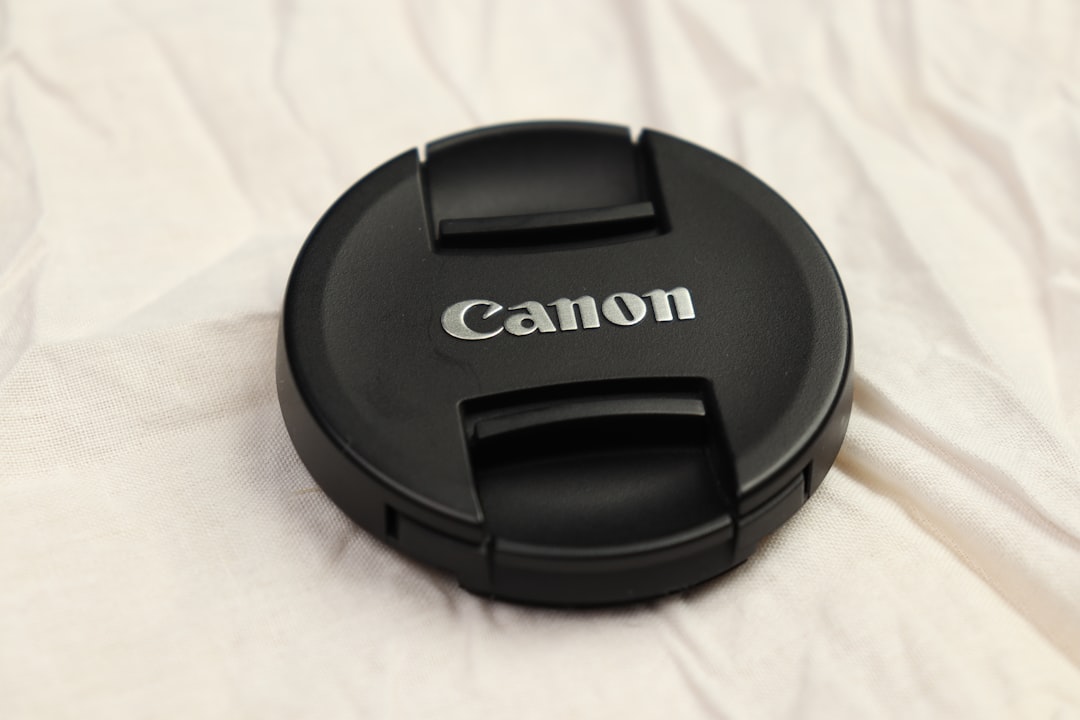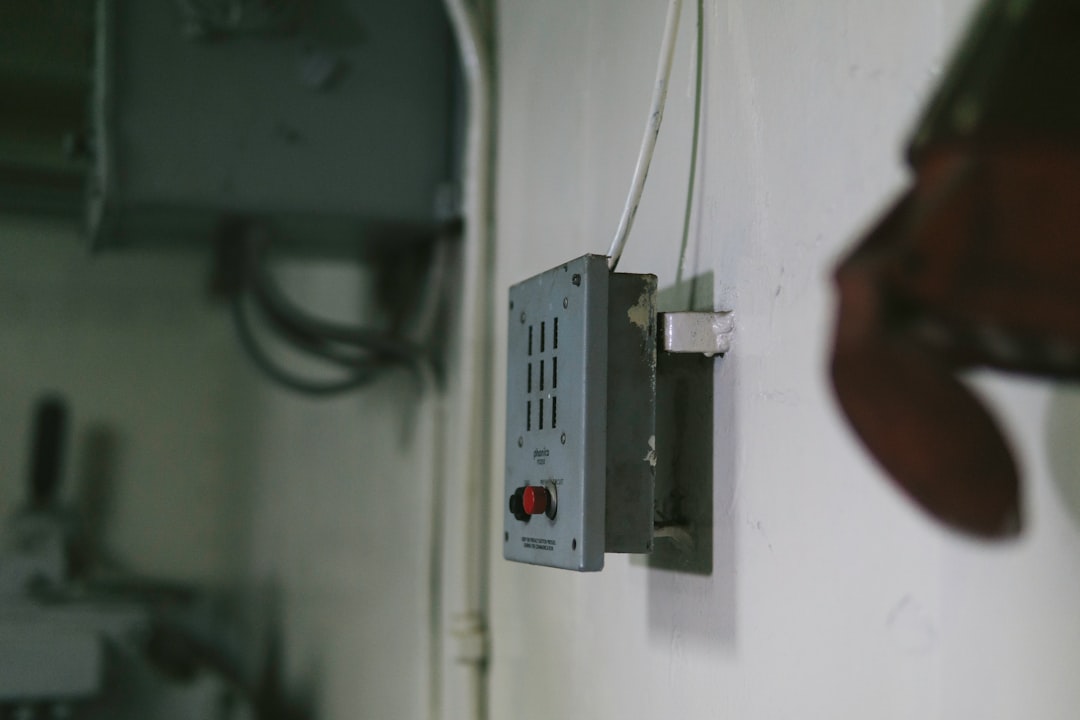

Engage prospects with a scan and streamline customer engagement with FREE QR code marketing tools by Sona – no strings attached!
Create a Free QR CodeFree consultation

No commitment

Engage prospects with a scan and streamline customer engagement with FREE QR code marketing tools by Sona – no strings attached!
Create a Free QR CodeFree consultation

No commitment
For carbon monoxide detector retailers, bridging the gap between in-store traffic and digital engagement is a persistent challenge. Consumers are seeking smart carbon monoxide detectors, reliable installation guides, and trusted advice at the moment of purchase, both online and offline. Yet valuable prospects often pass through stores without ever being tracked or entered into a retailer’s CRM, leading to missed opportunities and limited visibility into who is actually engaging on the sales floor.
QR codes have emerged as a strategic solution to these challenges, enabling carbon monoxide detector retailers to transform every physical touchpoint, from packaging and receipts to sales counters and direct mail, into interactive digital experiences. Since many buyers research or show interest without submitting forms or volunteering contact details, QR codes empower retailers to capture intent, educate customers, and accelerate purchasing decisions when the customer is most receptive. With no app required, scanning a QR code can guide buyers to detailed installation guides, comparative reviews, or special offers, and builds a more dynamic and attributable customer journey.
This guide explores high-impact strategies for using QR codes to convert foot traffic and offline attention into actionable digital engagement for carbon monoxide detector retailers. Learn how to leverage QR codes to streamline education, capture high-fit leads that might otherwise go untracked, and achieve revenue attribution with the precision and automation of a modern martech stack, mitigating the pitfalls of outdated, analog processes. For campaign-ready tactics, see innovative QR marketing.

In a typical retail environment, high-value prospects often browse displays, pick up product brochures, or even show interest in installation but leave without providing contact information, ultimately remaining untracked and unpursued. QR codes offer an immediate bridge to overcome these obstacles, making offline-to-online engagement seamless for both customers and store teams.
Start by aligning QR code placements with the questions that buyers ask most on the sales floor. Customers want to know which detector fits their home size, how to install it correctly, and whether their purchase qualifies for insurance discounts or local incentives. A well-placed QR code makes those answers one scan away. From there, use scan data to drive smarter follow-up and attribution, uncovering which placements and messages actually drive conversions.
Modern QR management platforms let retailers enrich CRM records with every interaction and automate the next best action. For example, a scan on a “smart vs. standard detector” comparison page could add a buyer to a segment for smart home bundles, while a scan on a “hardwired installation” guide could trigger a follow-up email offering an installer referral. Sona QR and similar platforms streamline this entire workflow, giving marketers a clean pipeline from scan to sale with clear attribution.
Traditional analog workflows create friction for customers and blind spots for retailers. QR-driven experiences solve both problems with a faster path to information and trackable outcomes that fuel smarter marketing.
This evolution is powered by attribution-ready QR platforms that surface lead signals, transform anonymous traffic into known audiences, and enable customer-specific targeting. The result is a marked improvement over analog workflows: cleaner data, faster follow-up, and measurable revenue lift.

In carbon monoxide detector retail, identifying and re-engaging promising prospects is difficult when so much initial interest happens in the aisle. Prospects often interact with displays, pick up materials, or ask staff questions, yet leave no digital footprint. That anonymity leads to unrecorded leads, missed opportunities to educate, and an incomplete understanding of which marketing assets actually drive decisions.
QR codes close this gap by converting physical interest into digital action while collecting useful context along the way. A single scan can deliver installation tutorials, safety checklists, and product comparisons, which helps buyers make confident decisions. At the same time, the scan creates a trackable event that retailers can use to segment and follow up across channels.
In practice, QR codes on packaging or shelf talkers become a real-time education channel and a lead capture engine in one. Retailers can guide shoppers to installation best practices, segment scanners by interest, and prompt follow-up offers like extended warranties or bundled alarms. This both lifts conversions and builds a qualified audience for future campaigns.

Choosing the right QR format ensures each scan maps to a meaningful action. For carbon monoxide detector retailers, formats that streamline support, education, and registration tend to deliver the greatest impact. Dynamic, updateable codes are particularly useful because content needs evolve as products and safety standards change.
With Sona QR, you can create and manage all these formats in a single platform, switch destinations as needed, and keep data unified across campaigns. That flexibility is essential when your product catalog updates or when safety guidance changes.

Growth lives at the intersection of customer curiosity and immediate action. Carbon monoxide detector retailers can unlock meaningful lift by placing QR codes at moments where shoppers are evaluating risk, comparing features, or preparing to install.
By instrumenting these touchpoints, retailers can stitch together anonymous interactions into a single, actionable view of the customer journey. This not only drives immediate conversions, it also strengthens loyalty through timely education and proactive support.

Different stages of the buyer journey demand different solutions. Strategic QR deployments address customer confusion, reduce drop-off before purchase, and maintain engagement after the sale. The most effective programs meet customers exactly where they are in the journey and guide them to the next step.
By automating these touchpoints, retailers turn passive engagement into trackable intent signals. Sales and marketing teams can prioritize upsell outreach based on content consumed, for example, promoting smart home bundles to customers who scanned app integration content.
Every scan is a signal. When managed well, those signals become audience definitions that drive precision retargeting, personalized offers, and better service experiences. For carbon monoxide detector retailers, audience building should map to intent shown in the aisle, in the home, or at post-purchase. For targeting strategies, use this retargeting playbook.
Start by creating distinct QR codes for each journey stage and use case. Awareness scans at community safety events are not the same as consideration scans on a shelf comparison or conversion scans on a warranty form. Tagging and segmenting across these moments lets you tailor cadence, content, and offers appropriately.
For example, if a customer scans an installation guide but does not complete registration, trigger a reminder with a short registration form and a modest incentive like a discount on a second detector for multi-room safety. This closes the loop on interest while enriching your audience data for future campaigns.
Carbon monoxide detector retailers succeed when offline discovery and digital follow-up work as one system. QR codes are the connective tissue that makes this possible, tying print and in-person experiences to measurable online actions and automated workflows.
To maximize impact, align QR experiences with each channel’s strengths. Print favors foundational education and clear CTAs. Social excels at community building and user-generated content. In-store video can prompt on-the-spot saves of how-to resources. With a centralized platform like Sona QR, all of these interactions roll into a single dataset that informs your next move.
QR codes serve as the offline onramp to your digital marketing engine. With Sona QR, you can manage all codes centrally, monitor performance by channel, and sync scan data with your CRM and ad platforms to create closed-loop reporting.
Begin by defining a clear goal that aligns with a specific customer moment. For carbon monoxide detector retailers, goals often include product registration, installation booking, or smart detector upsells. The more specific the objective, the easier it is to design the right message, placement, and follow-up flow.
A strong use case keeps the program focused and measurable. It also simplifies store associate training because teams can communicate a single, concrete benefit for scanning.
Selecting the right code type determines what you can track and change later. Static codes are simple and permanent. Dynamic codes provide analytics, the ability to update destinations without reprinting, and campaign controls that matter in fast-evolving retail environments.
Dynamic codes supported by platforms like Sona QR unlock deeper analytics, automated segmentation, and integration with your CRM. This ensures your offline placements tie directly to online outcomes.
A scannable, on-brand design increases adoption and builds trust. Treat the QR code as a call to action, not just a graphic. Surround it with clear instructions and a compelling benefit so customers know exactly what they get.
After testing, produce print files in the correct resolution for each medium. Small codes on glossy surfaces or curved packaging may require size adjustments to remain reliably scannable.
Roll out your codes where they will influence decisions and simplify tasks. Prioritize placements that attract browsing shoppers, engage post-purchase customers, and support event attendees.
Tie each placement to a unique dynamic code so performance can be compared. This reveals which messages and locations deliver the most high-intent scans, guiding future investment.
Measurement turns QR programs into revenue engines. Monitor engagement, diagnose drop-off points, and refine landing pages and CTAs over time. Use segmentation rules to ensure every scan triggers the right follow-up sequence.
Optimization is ongoing. Regularly review performance dashboards and share results with store teams so they see the impact of promoting scans.
Historically, retailers have struggled to prove which initiatives drive purchases, registrations, or long-term engagement. Without attribution, it is hard to justify spend or double down on what works. QR codes change that by connecting offline actions to measurable digital outcomes that populate your CRM and inform revenue reporting. For measurement frameworks across channels, see offline attribution.
Tie each QR scan to a specific funnel event such as registration, installer referral, or smart app activation. This lets you compare content performance, prioritize high-value placements, and feed predictive models that score leads based on real behavior.
With Sona QR and Sona.com, you can track every scan with time, device, location, and campaign source, then stitch those interactions to known buyers using identity resolution. Sona’s Buyer Journeys unify QR scans with web, ad, and CRM touchpoints, turning fragmented signals into a clear path from first scan to closed revenue.
Sustained results come from consistent execution and thoughtful iteration. Focus on tips that align with your most common media, your buyer journey, and your tech stack.
First, ensure every code has a unique purpose and destination. This allows for accurate attribution and prevents confusing experiences. Then, train staff to promote scanning naturally. Customers are more likely to scan when they understand the benefit and see a knowledgeable associate advocating for it.
Get creative with placements while staying relevant. For example, include QR codes on HVAC maintenance reminders or furnace service stickers to promote carbon monoxide safety checks, or add a QR to community safety kit handouts to drive sign-ups for seasonal detector checkups. For inspiration, explore these in-store QR ideas. Start creating QR codes for free and expand as results prove out.
QR codes present carbon monoxide detector retailers with a clear path to resolve long-standing disconnects between in-person engagement and digital conversion. By turning every physical asset into a channel for real-time interaction, you surface meaningful intent signals that guide smarter nurturing, timely education, and measurable revenue impact. The days of guessing which brochures or displays are working can end with a scan-to-conversion pipeline that is easy to launch and simple to optimize.
A robust QR-driven strategy ensures that even fleeting moments of customer curiosity become lasting opportunities. With dynamic codes, modern analytics, CRM integration, and automated follow-up, retailers can transform anonymous foot traffic into qualified demand and long-term loyalty. For brands aiming to lead in home safety, the opportunity is significant: use QR codes to convert offline attention into digital momentum, prove ROI, and earn trust at every step of the buyer journey.
QR codes have redefined how carbon monoxide detector retailers engage prospects and turn moments of interest into sales and relationships. By deploying strategic QR initiatives with platforms like Sona QR and Sona.com, businesses can attribute every scan, segment audiences by actual engagement, and trigger automated workflows that fit each buyer stage. The result is a repeatable system that turns physical interactions into measurable growth, optimizes resource allocation, and strengthens customer confidence in a competitive market.
QR codes have transformed carbon monoxide detector retailers from static product displays into dynamic, measurable sales drivers. Whether it’s streamlining customer acquisition, enhancing in-store experiences, or providing instant access to critical safety information, QR codes replace traditional barriers with seamless, mobile-friendly interactions that capture real-time engagement data—turning every product label and marketing material into a powerful conversion tool.
Imagine knowing exactly which promotional efforts lead to purchases or safety registrations—and updating your campaigns instantly without costly reprints. With Sona QR, you can create dynamic, trackable QR codes in seconds, connect every scan directly to revenue, and optimize your marketing strategies on the fly. No missed leads, no wasted spend—just smarter, more profitable growth for your retail business.
Start for free with Sona QR today and turn every scan into a safer home and a loyal customer.
The article does not specify top-rated carbon monoxide detector brands.
The article does not provide specific online retailers but suggests that carbon monoxide detectors can be purchased through retailers who engage customers both in-store and online.
Smart carbon monoxide detector installation can be guided by scanning QR codes placed on packaging or in-box inserts, which link to digital installation guides with step-by-step instructions and troubleshooting videos.
Look for features including sensor type, connectivity options, battery life, compatibility with smart home ecosystems, and support for app integration accessible via QR codes.
The article does not provide specific pricing information for carbon monoxide detectors.
QR codes help by providing instant access to product comparisons, installation guides, warranty registrations, and special offers, while enabling retailers to track customer engagement and follow up effectively.
Dynamic QR codes allow retailers to update content without reprinting, track scan analytics, segment audiences, integrate with CRM systems, and automate follow-ups, improving marketing precision and customer engagement.
QR codes should be placed on shelf talkers, product packaging, checkout signage, direct mailers, event materials, window displays, and in-box inserts to maximize customer engagement at key decision points.
QR codes link customers to mobile-optimized education hubs featuring installation tutorials, safety checklists, verified reviews, and updated safety regulations, providing dynamic and accessible information.
Retailers use QR code scan data integrated with CRM and analytics platforms to track engagement by location, time, and campaign source, measure conversions, and attribute revenue to specific marketing materials.
Retailers should define clear campaign goals, select appropriate QR code types (preferably dynamic), design branded and scannable codes, deploy them across high-impact channels, and continuously track and optimize performance.
By creating unique QR codes for different buyer journey stages, tagging scans by intent and location, and syncing data with CRM systems, retailers can segment audiences and deliver personalized follow-ups and offers.
Common formats include web links to product pages, vCards for contact info, SMS or email for support, Wi-Fi access for events, and app download links for smart detector apps.
Use Sona QR's trackable codes to improve customer acquisition and engagement today.
Create Your FREE Trackable QR Code in SecondsJoin results-focused teams combining Sona Platform automation with advanced Google Ads strategies to scale lead generation

Connect your existing CRM

Free Account Enrichment

No setup fees
No commitment required

Free consultation

Get a custom Google Ads roadmap for your business






Launch campaigns that generate qualified leads in 30 days or less.
